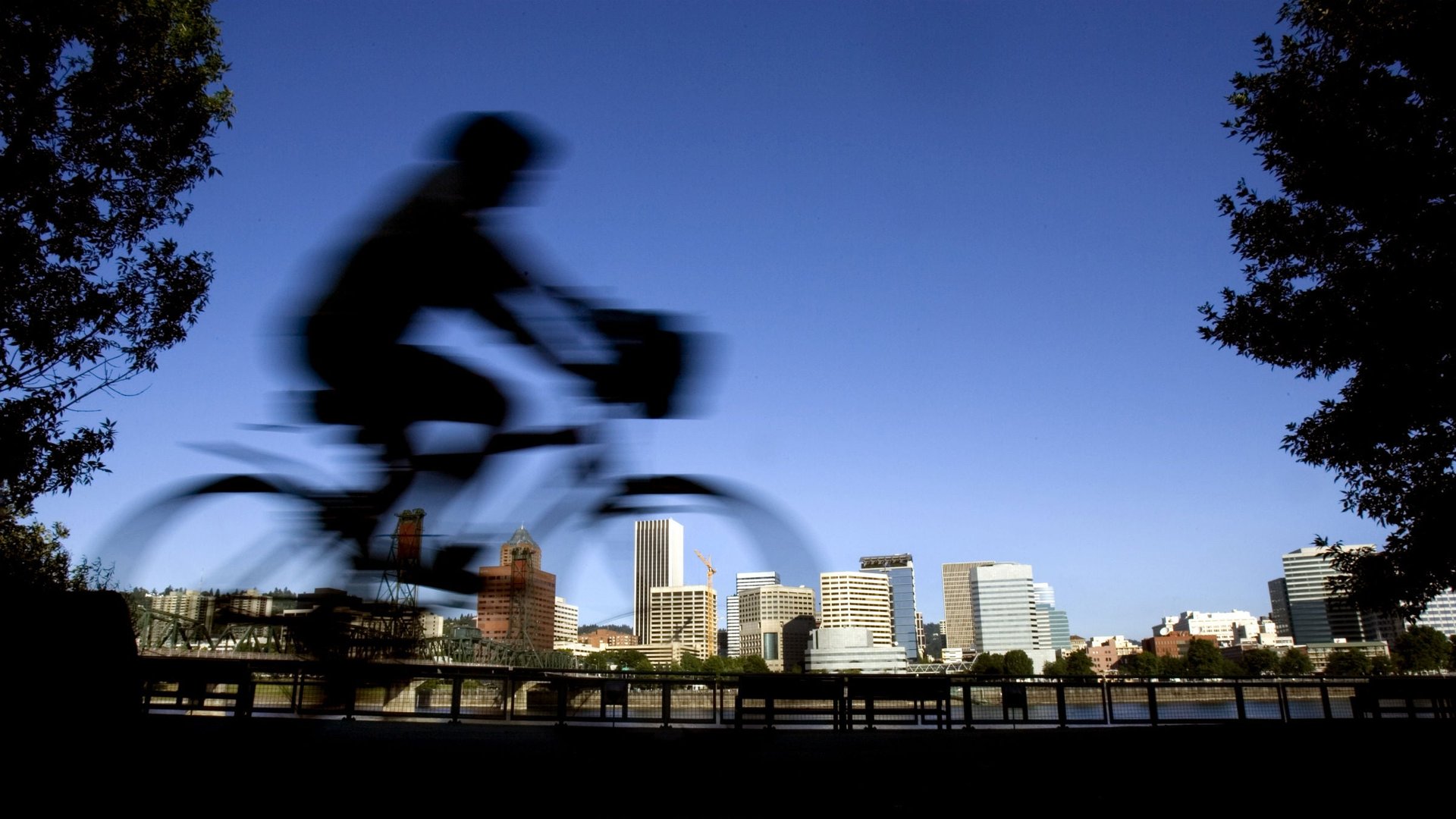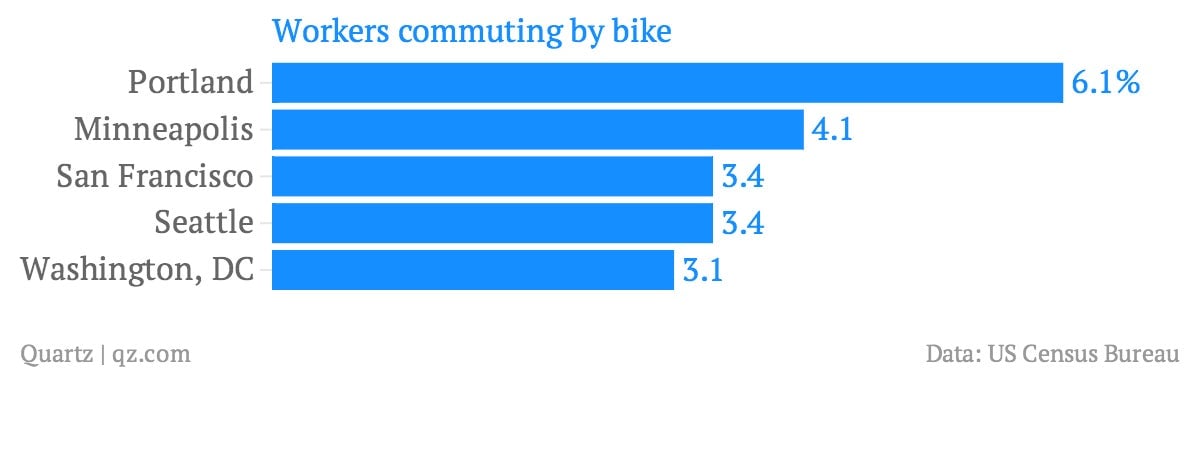Portland has 10 times more people cycling to work than the average US city
The number of US workers skipping bus or car and bicycling to work jumped 60% in the last decade.


The number of US workers skipping bus or car and bicycling to work jumped 60% in the last decade.
Men were more than twice as likely to take a two-wheeled commute as women and bicycle commuting also was more common in college towns and in a few cities that promote it, the US Census Bureau reports today.
Overall, bicyclists account for just 0.6 % of all commuters, but in Portland, Oregon, they were 6.1% and in college towns Santa Cruz, California, and Cambridge, Massachusetts, it topped 7%.
People with a graduate or professional degree or those with less than a high school degree—0.9% and 0.7% of them, respectively—were most likely to pedal to where they collected their paychecks. The report called Modes Less Traveled also looked at walking to work, which was most prevalent in Boston. Workers with incomes of $200,000 or more walked to work at higher rates than those in three income categories below them, the Census researcher wrote, reflecting the pedestrian-friendly cities of New York, San Francisco and Washington, DC.
The median commute time for walkers took 11.5 minutes, for bicyclists 19.3 minutes versus 25.9 minutes for all other workers (except those who work from home). Bicyclist and walker numbers may be understated because those who combine people-power with a bus or other mode of travel are not counted.
Five major US cities highest portion of workers bicycling in:

“It does everything: You save money, you get exercise, you’re outside,” says Carol Goodloe, a US Department of Agriculture senior economist who rides eight miles each way. “And you’re not messing with traffic every day.”